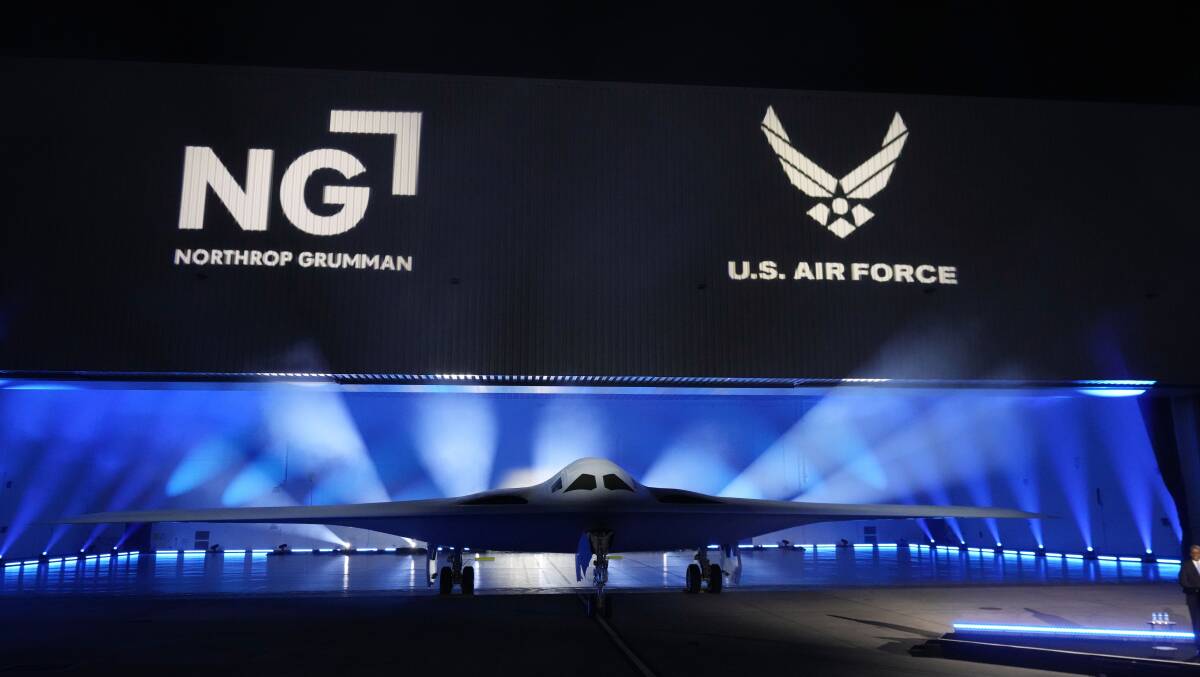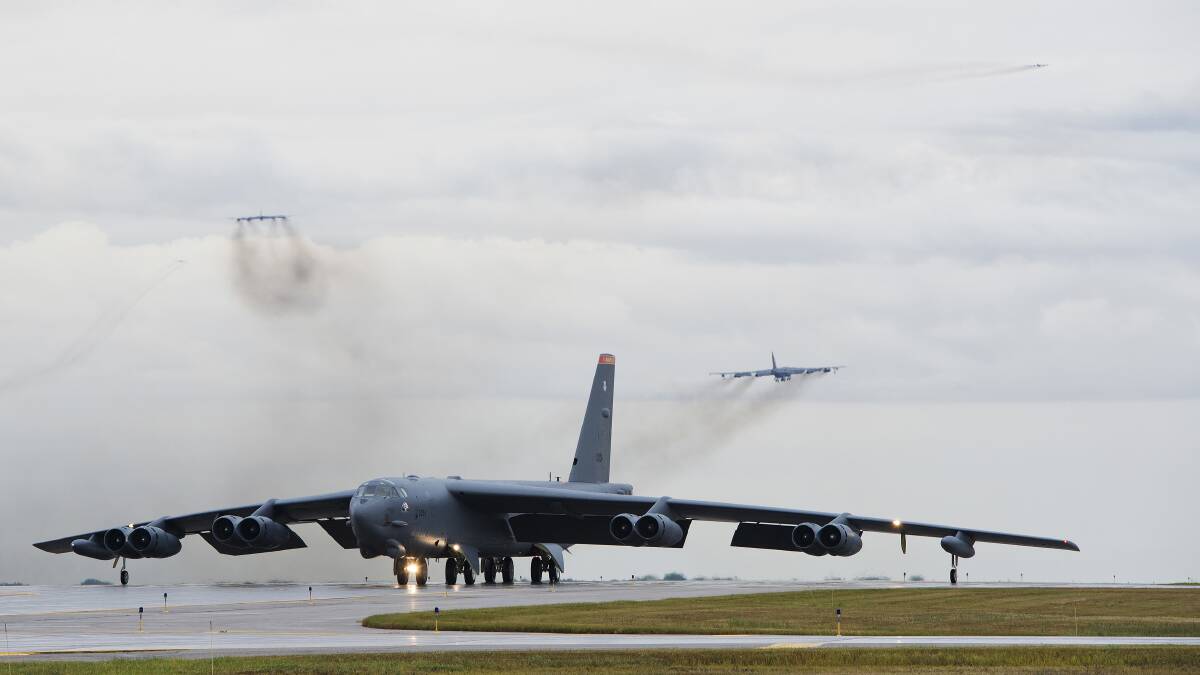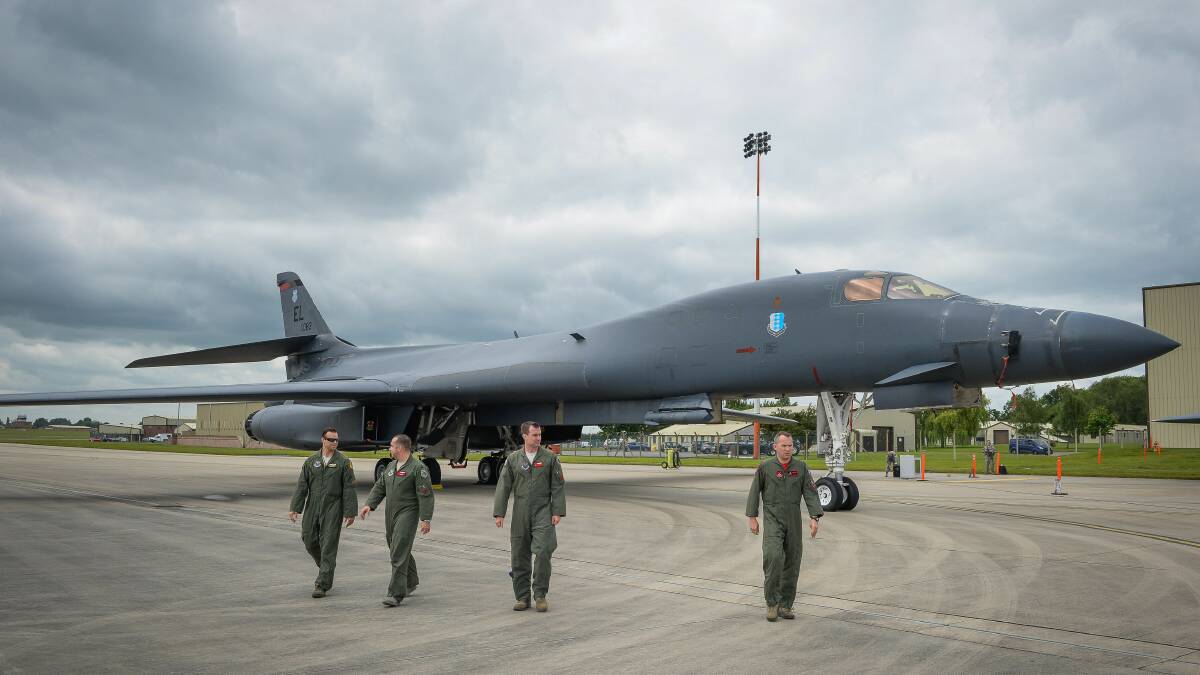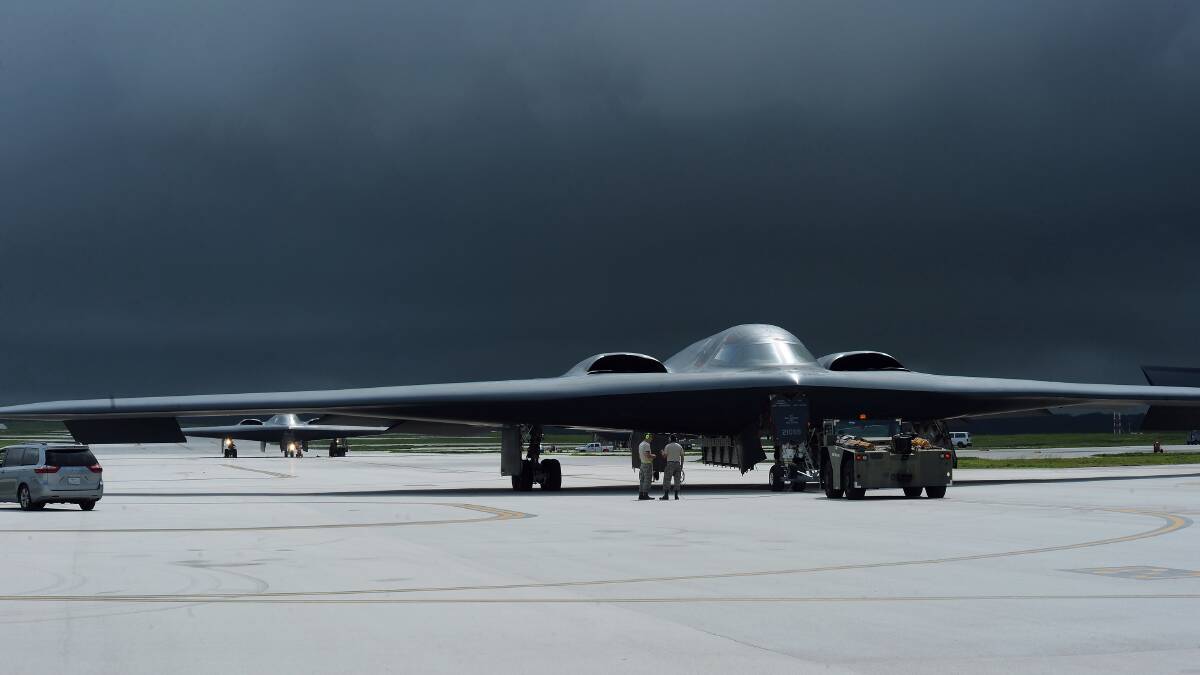Producing things costs money. So does destroying things. A lot of military planning revolves around finding the most economical way of getting explosive on to a target when someone is trying to stop you.
Subscribe now for unlimited access.
$0/
(min cost $0)
or signup to continue reading
The lower the cost of doing it, the more of it you can do.
The US has just unveiled a cheaper means, the Northrop Grumman B-21 Raider bomber, though cheapness won't be the first notion that occurs to eye-popped American taxpayers who hear that each of the aircraft will cost $1 billion.
Looking at the B-21, Chinese military planners know that, because it can deliver explosive more economically, after it enters service around 2027 they must expect a lot more destruction if they start a war over Taiwan.

Some people in Australia want us to buy B-21s. It's a pretty unlikely idea, at least until the end of next decade, and probably not even a good one.
B-21s will be efficient because they will be extremely hard to detect, have enormous range and supposedly be easy to maintain. Because they'll be so hard to detect, they'll be able to get close to targets and use short-range and therefore cheap weapons.
Because B-21s will have enormous range, they won't need much (or any) in-flight refueling from tanker aircraft, which themselves are expensive to buy and run. The B-21 has probably been designed around the mission of flying from Hawaii and Alaska to threaten targets in and near China.
A quick bit of aviation history will help here. Beginning in World War I, when bombers first appeared, the idea was for them to fly as high and fast as possible so fighters rising from the ground couldn't catch them. The famous Boeing B-52 Stratofortress, entering service in 1955, was designed accordingly.

By the 1960s that game was up, because missile batteries on the ground could threaten anything in the air they could see and reach. To get at well defended targets, the B-52 now had to fly low, hiding behind hills, though it wasn't much good at it.
The US designed a bomber that was good at it, the Rockwell B-1 Lancer - like a bigger equivalent of the F-111, which Australia used to have. But the B-1 has become less useful since it entered service in 1986, because flying low is no longer such a safe way of getting at difficult targets. The B-1 is also a complicated thing and costs a lot to run.
The B-52, meanwhile, adopted another solution. It went back to high altitude, which is good for long range, and carried cruise missiles, which it could launch far from the target and defending surface-to-air batteries and fighters. Problem: cruise missiles, basically little jet aircraft, cost vastly more than bombs - millions of dollars a pop.

Then the US came up with a third solution, the Northrop Grumman B-2 Spirit stealth bomber, which entered service in 1997 and was really hard to detect, so it could get close to targets even if it flew high. Problem: B-2s were so pricey that the US eventually bought only a few of them, and their running costs turned out to be horrendous.
Now the US Air Force wants to keep its remaining 76 B-52s until the 2050s or longer, giving them new engines, but replace its 45 B-1s and 20 B-2s with at least 100 B-21s.
The B-21 looks a lot like the B-2, basically because the older bomber's designers already knew what was the best shape for flying a long way while not reflecting radio waves back to a radar and getting detected.
Also to help avoid radar detection, the B-21 has an extremely smooth surface and surely uses materials that are excellent at absorbing radio waves. We can be sure it carries equipment to give its crew outstanding awareness of where threats are, further improving its ability to get close to a target.

As Russia has learned in Ukraine, costly cruise missile stocks are soon exhausted in war. Targets seem endless, some are successfully defended, and many that are hit get fixed and have to be hit again.
While B-21s are no doubt intended to use cruise missiles against the hardest targets, those weapons would generally be shorter-ranged, cheaper and therefore more abundant than B-52s' missiles.
If enemy defences were weak in places, perhaps after they'd been hit with cruise missiles, B-21s could even closely approach targets and attack with $60,000 glide bombs, which go only 100km or so.
Such cheap bombs can be available in colossal numbers. Unless the B-21s were somehow eliminated, maybe by hitting their faraway bases, they would be back to make more attacks day after day after day.
MORE AGE OF THE DRAGON:
A risk is that Chinese leaders will fear this and decide they should try to take Taiwan before the B-21 and other improvements to US military capability get into service.
Since B-21s are so good, why wouldn't Australia buy some?
First, we almost certainly cannot. Yes, the US is letting us in on some nuclear-submarine technology, but that doesn't mean it will share secrets of a bomber it has kept almost completely hidden during development.
Anyway, Northrop Grumman probably won't have spare capacity to make B-21s for another customer until well into the 2030s.
Also, we don't need the B-21's combat radius of probably more than 8000km.
Finally, because we'd buy only about 10 B-21s, each would be far less economical to acquire and run than the US's. For long-range strike, it might be cheaper just to stock up on a lot of expensive missiles for launching from the air and ground, extend fighter range with tankers and maybe use long-range drones.
- Bradley Perrett was based in Beijing as a journalist from 2004 to 2020.


